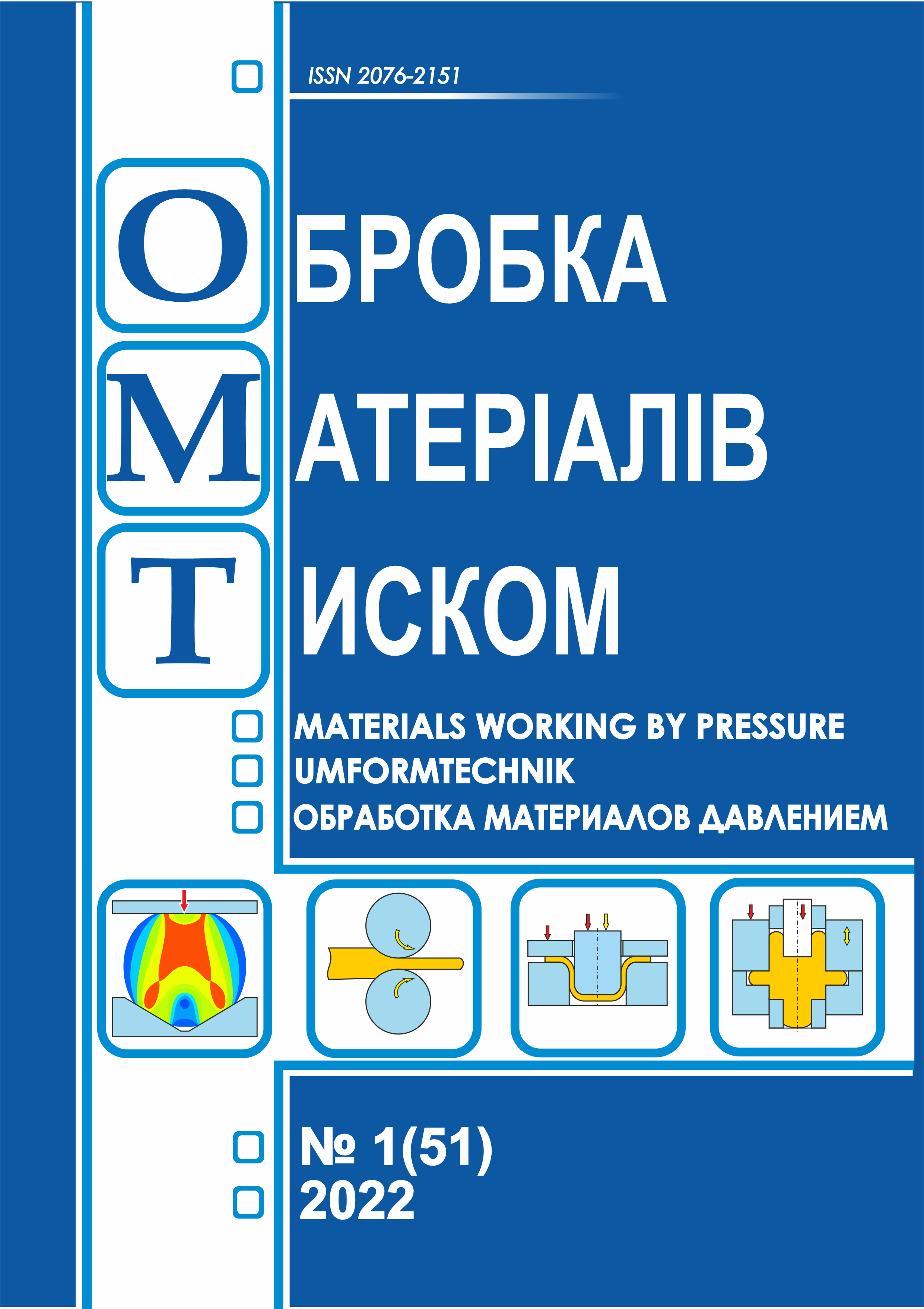Resource assessment of details at the design stage and analysis of technological processes efficiency of blanking and punching production
DOI:
https://doi.org/10.37142/2076-2151/2022-1(51)204Keywords:
blanking and punching production, technological process, efficiency evaluation criterion, part resource, part tension.Abstract
Sukhov V., Kabanyachyi V. Resource assessment of details at the design stage and analysis of technological processes efficiency of blanking and punching production
The criterion for evaluating the technological process efficiency of blanking and punching production, which takes into account of the operation part resource, is developed in article. The criterion was developed on the basis of the assessing method of the allowable tension of aircraft structure parts that occurs during its production or repair. The tension at a point was understood as the relative value of the stress state acting on it, referred to the limits of static strength in the general case of an orthotropic material, and described by Hill's criterion. In accordance with modern ideas about the durability of structural materials, it was assumed that cracks are located across the main tensile stress (the largest), that is, mainly tensile main stresses are responsible for the appearance and development of cracks. Maximum allowable stress values for weakly, moderately and strongly stressed structural parts subjected to multi-cycle loading during aircraft operation were obtained. These stress values can be used as criteria for the acceptability of the technological process of blanking and punching production or serve as the basis for its refinement, which ensures a reduction to an acceptable level of residual technological stresses. The proposed criterion of the technological process efficiency of the blanking and punching production, which takes into account the operation part resource, allows to choose the optimal technological process, as well as to conduct a comprehensive analysis of technological process rationality according to the accepted criteria of manufacturability and economic efficiency. The proposed criterion is quite general, as it is based on the currently widespread linear hypothesis of damage summation, it is fundamentally independent of the type of hypothesis itself and can easily be adapted to the one that received the best experimental confirmation for the operating conditions of the aircraft and parts made of a certain type of materials.
References
Bychkov S.A., Pavlov I.V., Sukhov V.V. Quantitative assessment of blanking and stamping production. UkrNIIAT. 1996. 4 p. Dep. in the State scientific and technical library of Ukraine 12.17.96, No. 276-Ukr96. (in Russian).
Sukhov V.V. Quantitative assessment of manufacturability of products in the works of researchers. UkrNIIAT, 1996. 6 p. Dep. in the State scientific and technical library of Ukraine 02.12.96, No. 234-Ukr96. (in Russian).
Ivanov V.V. The manufacturability of structures is a reserve of production. Kharkov: Prapor, 1968. 84 p. (in Russian).
Sukhov V.V. Accounting for the resource when optimizing the design and technological parameters of parts. Information and new technologies. 1997. 1, pp. 27 - 29. (in Russian).
Bronze L.D. Technology and maintenance of the aircraft resource. Moscow: Mashinostroenie. 1986. 184 p. (in Russian).
Oding. I.A. Permissible stresses in mechanical engineering and cyclic strength of metals. Moscow: Mashinostroenie. 1962. 185 p. (in Russian).
Gaidachuk V.E. On the permissible level of tension of aircraft structure parts arising during their production or repair by elastic deformation. Samoletostroenie. Aircraft technology. 1987. 54, pp. 79-83. (in Russian).
Hill R. Theory of mechanical properties of fibrous composite materials. Mechanics. 1966. 2, pp. 131–149. (in Russian).
Shvab'yuk V.I. Strength of materials. Kyiv: Znannya. 2016. 400 p. (in Ukrainian).
Bhavikatti S.S. Strength of materials. Fourth edition. Vikas Punblishing House. 2013. 483 p.
Ivankov I.E. On the issue of durability of aircraft structures. Riga: RKIIGA. 1971. 7, pp. 82-84. (in Russian).
Gudkov A.I., Lemashov P.S. External loads and strength of aircraft. Moscow: Mashinostroenie. 1987. 470 p. (in Russian).
Gassner E., Jacobi G. Endurance test to determine the allowable design stresses in the lower wing panel of a transport aircraft. Sat. TsAGI. 1965. 146, pp. 18-19. (in Russian).
Stefanov R.I. Endurance of thin-sheet aluminum alloys D16T and AMG6-BM under linear and plane stress state under high-frequency loading. Problems of strength. 1977. 7, pp. 55-57. (in Russian).
Kuleshov D.Ya. Influence of loading frequency on the endurance of light alloys. Sat. Works on the endurance of aircraft structures. Moscow: TsAGI. 1972. 1419, pp. 79-81. (in Russian).
Redkovets N.F. To the question of the choice of parameters for fatigue testing programs for parts of aircraft structures. Sat. Strength and durability of aircraft structures. Kyiv: KIIGA. 1965. (in Russian).
Stepanov M.N., Giatsintov E.V. Fatigue of light structural alloys. Moscow: Mashinostroenie. 1973. 128 p. (in Russian).

